Cancer is never an easy topic to discuss, and this is even more difficult when it comes to childhood cancer. Unfortunately this discomfort around the topic and lack of talking about it has meant that only 3% of all cancer funding is spent on children and young people.
This figure is especially shocking when you consider that cancer is the number one cause of death for children under 14.
September is Childhood Cancer Awareness Month so this week on the blog we hear from two mums whose daughters have both suffered with cancer, one of whom very sadly died. They are absolutely passionate that more parents are aware of their girls’ stories, in order to raise awareness and push for change in the diagnosis, treatment and research of childhood cancer.
We appreciate this is a very scary topic to read about, but if it can save one child’s life, or start the important conversations needed around this subject, then we hope you’ll agree it will be worth a difficult read.
As a parent, what should I look out for?
Signs and symptoms of cancer can get confused as they can also be indicative of many less serious illnesses. However, it is important to know what might be a cause for concern, as early diagnosis makes a huge difference to outcome.
The main signs and symptoms of childhood cancer are:
· Pain that does not go away quickly, especially in the bones, joints, back or legs, or pain that wakes your child in the night
· Unexplained lumps, firmness or swellings
· Sweating more than usual, especially at night
· Headaches or dizziness that do not go away, especially in the morning
· Sudden unexplained weight loss
· Blood in urine, poo or when being sick
. Being unable to wee
· Ongoing fatigue
· Unexplained bruising or bleeding
. Unexplained seizures or fits
. Changes in the appearance of the eye - this is sometimes noticed as a unusual eye reflection in photos
· Flu-like symptoms that don’t go away, or persistent infections, one after the other
If your child has some of these symptoms and you feel like something just isn’t right, visit your GP. At Mini First Aid we always say that as a parent, you know best what is usual for your child, and if you have concerns, then trust your instincts.
Lily’s story
Lily’s first sign of cancer was a pea-sized lump below her right knee which appeared in September 2020 when she was 9 years old. Being a bit accident prone, Lily and her parents assumed she’d just bumped it. But a month later it was the size of a £2 coin.
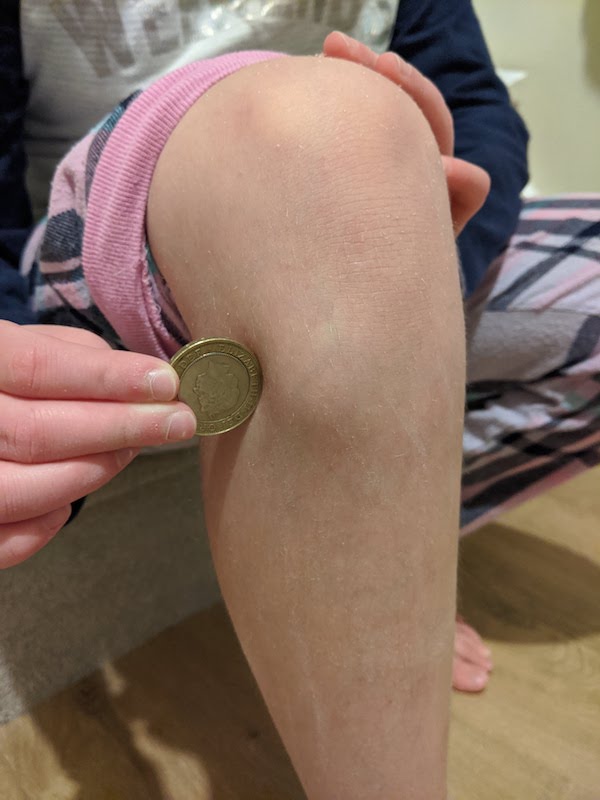
The GP referred Lily for an ultrasound which took place 3 weeks later. By this point the lump had grown bigger than her knee. Lily’s parents were told more investigation was needed and a month of tests and a biopsy followed. Three months after the lump first appeared, Lily was diagnosed with cancer. It was a really rare cancer – an Undifferentiated Soft Tissue Sarcoma – meaning there was no treatment protocol in place. Lily’s treatment plan was a “best guess”. It involved a gruelling 10 rounds of chemotherapy, ovarian cryopreservation, surgery to remove the sarcoma (the lump) and 28 radiotherapy sessions. Proving the lack of recent funding and research into childhood cancer, the newest of the drugs used in Lily’s treatment dated back to 1987.
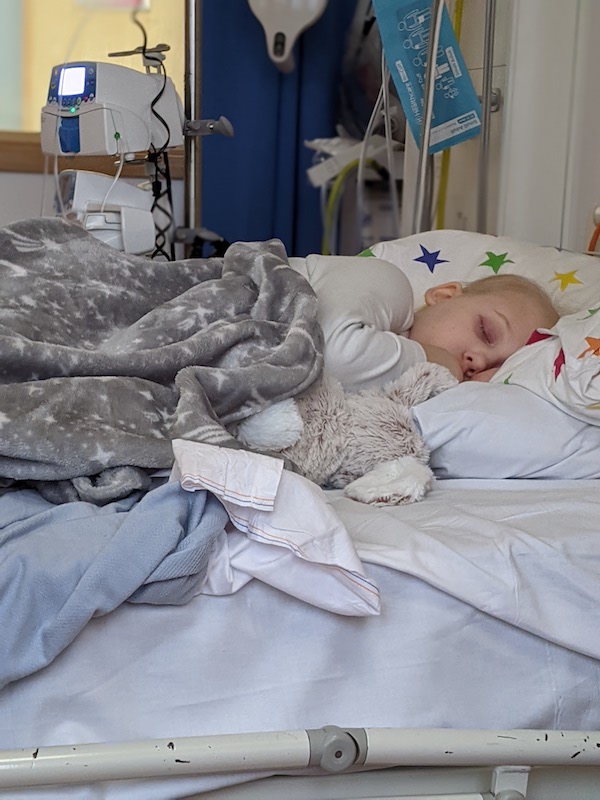
We heard from Lily’s mum Kirsty:
“We now know how incredibly lucky Lily was that our GP referred her for an ultrasound after only one visit. We also now know that she is very much in the minority. Other than the lump Lily had no other symptoms of childhood cancer. She wasn't in pain, and she'd actually put on weight, not lost it. It never occurred to us that it could be cancer, you never think it will happen to your family.
She currently has no evidence of disease, and is doing well, but as there is little research into her type of cancer, we don't really know what the future holds. We also don’t know the extent of damage the treatment has done, although we do know she will require more surgery as her left leg (where the sarcoma and spread was) will not grow at the same rate as her right. This is why there needs to be earlier diagnosis for children, more research and better treatments that are kinder to children’s bodies.”
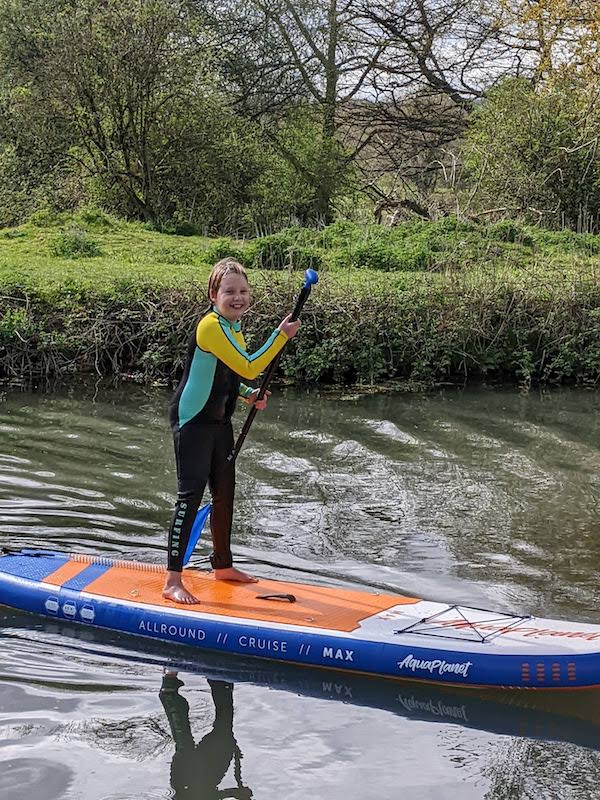
Sophie’s story
The first sign of Sophie’s cancer was tummy pain and nausea which lots of children suffer from so unsurprisingly, this didn’t ring any alarm bells. This was July 2020. However, by August Sophie was confined to bed for several days, unable to eat or move due to the pain and nausea. Sophie’s worried parents contacted their GP who felt her tummy and checked her over, before a bowel infection was deemed the culprit and Sophie was sent home to recover.
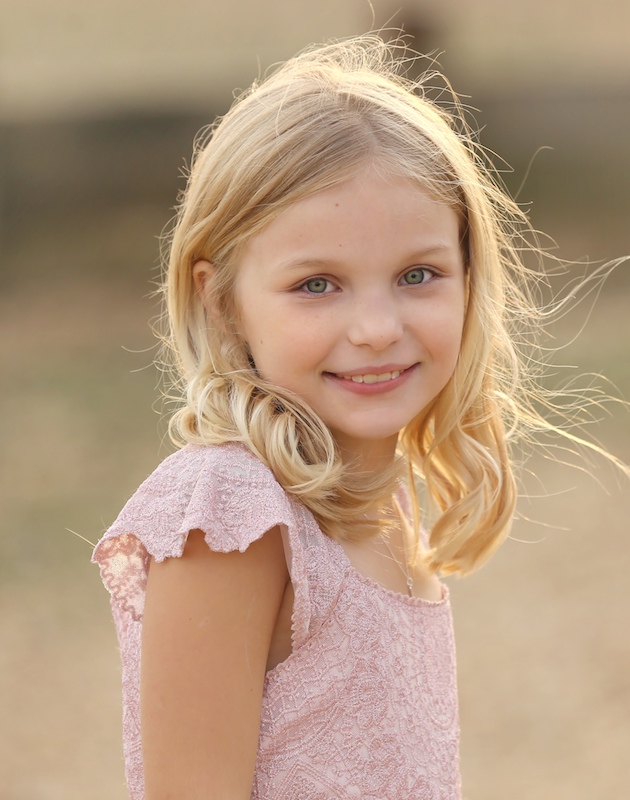
A few days later with Sophie feeling better she set off on holiday with her grandparents. During the holiday Sophie started bleeding down below but was too embarrassed to tell anyone. On getting home, her mum Charlotte noticed blood when doing the washing – by this point Sophie had been bleeding for 8 days and it was getting heavier. With the GP and 111 dismissing it as Sophie’s first period, despite Charlotte adamantly telling them it wasn’t, the family had no other choice than to go to A&E. Shockingly, due to a lack of knowledge on childhood cancer, 53% of children are diagnosed with cancer at A&E, compared to 22% of adults.
At A&E, a doctor checked Sophie’s tummy and asked “how long has she had this lump for?” Charlotte was utterly horrifed as she replied “what lump?” Over the next few days Sophie had scans, tests and an MRI revealing a 12cm tumour that urgently needed removing. Unfortunately, due to the position of the tumour only 95% could be removed, and complications meant Sophie needed 7 days recovery in hospital following surgery.
A week later Sophie started 9 rounds of aggressive chemotherapy. She was devastated to lose her hair and was really sick but despite all this, Sophie’s happy personality shone through and she was incredibly brave and positive. During this time, Sophie also needed daily radiotherapy and as it was during the second lockdown, the family were very isolated.
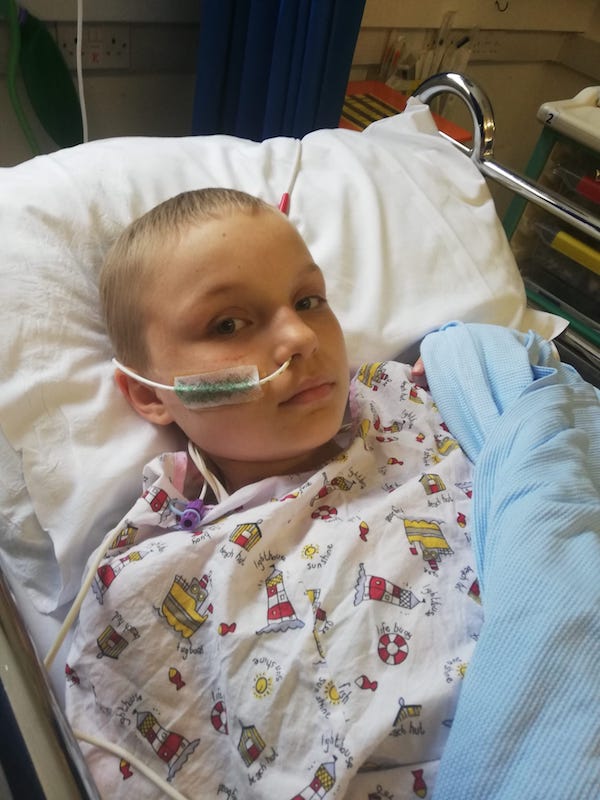
Very sadly for Sophie and her family, in June 2021 a new 2.5cm tumour was found at the site where Sophie’s first tumour had been removed. This area had already undergone so much treatment, and due to toxicity from the previous treatments, it was impossible for Sophie’s body to take any more.
Charlotte, Sophie’s mum says:
“We were told that anything we give to Sophie was about giving her time not a cure. We made the heart-breaking decision with doctors to stop treatment. We were honest with Sophie throughout her treatment and involved her in the decisions. We felt this was her body and she was the one that had to endure the treatment. Sophie was so positive and believed throughout the first treatments that the doctors would make her better. When she relapsed she didn't want any more treatment and didn’t want to spend more time in hospital. She knew what this meant but wanted to live the time she had left at home with her family. A very brave and grown up response to something that is everyone's worst fear. Sophie set out writing her bucket list and had some incredible experiences despite being in so much pain - some days I didn't think we would achieve them but with Sophie's true grit and determination she did. She also wanted to change a number of things nationally and wrote these on her bucket list for me to achieve in her memory. Sophie sadly died aged 10 on 18th September 2021 surrounded by her family at home. Sophie's personality remained right to the end and she never lost her incredible spirit.”
So what can be done to change outcomes for children with cancer?
Sophie’s mum Charlotte has set up Sophie’s Legacy and created the visual below which shows why something has to change:
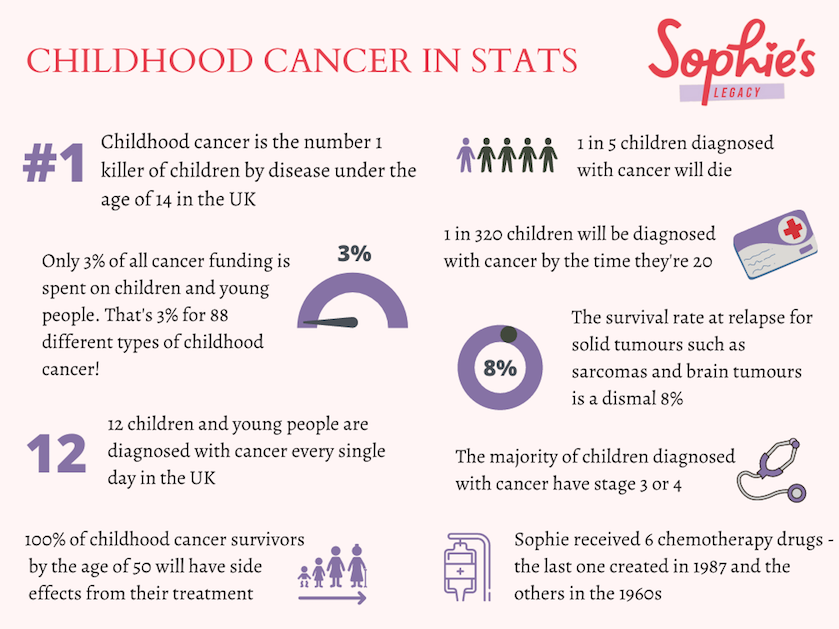
It is widely thought that childhood cancer is rare. However, recent statistics show that an average GP practice in the UK would expect to see a case of childhood cancer every 1.8 years. And unfortunately by the time most children are diagnosed with cancer, often after parents have been back and forth to their GP, their cancer has become so widespread that it is often too late to achieve a positive outcome.
Both Lily’s mum Kirsty and Sophie’s mum Charlotte would like a national campaign for the public so that parents are aware of the signs and symptoms to look out for. You can find information on the signs and symptoms at The Children's Cancer and Leukaemia Group. If you would like to support research and funding for childhood cancer you can visit Lily's Sarcoma Appeal and Sophie’s Legacy.
A final word from Sophie’s mum:
“My advice to any parent is you know your child better than anyone – if you think something isn’t right then keep insisting for them to be seen again. Listen to your gut instincts.”
Thank you to both Kirsty and Charlotte for their collaboration with us on this blog. These heart-breaking stories need to be told so that more parents and children can get the positive outcomes they deserve and not allow cancer to win. And thank you for reading and for helping us raise awareness on this really important topic.
All the best, Mini First Aid xxx
Sources: The Children’s Cancer and Leukaemia Group, NHS Inform Scotland.







